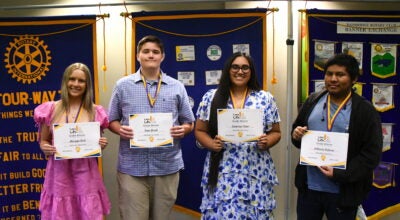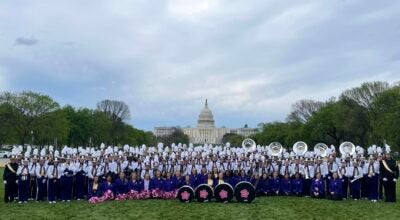BHS Class of 1960 was special
Published 11:52 am Thursday, November 4, 2010
Young Chris Plotts has spent his summer attending 50th high school class reuni
ons. That makes one wonder if he has a peculiar hobby, especially when you consider he has only been out of high school for 10 years.
Last Saturday night, he attended the 50th reunion of the Bainbridge High School class of 1960.
Plotts is employed as a member of the data team for the American Institutes for Research in Washington, D.C., which is conducting a follow-up study to a research project initiated 50 years ago by the AIR in conjunction with the U.S. Department of Education. More than 400,000 students, or 5 percent of students nationwide, in 1,300 public, parochial and private high schools, were selected to participate in Project TALENT.
As far as Plotts can determine, Bainbridge was randomly selected to participate in the study, which involved a rigorous two to three days of testing across multiple subjects. The original tests covered such academic areas as math, science, language and history. There were also personality and personal interest inventories, including questions about hunting and fishing knowledge, and reasoning questions.
One of the original questions Plotts found most curious, and one of his favorites, was a home economics question that asked the student to prioritize which item should be cleaned first in the kitchen. The choices were walls, floors, refrigerator, oven or stove.
Plotts believes follow-up studies were done after one, five and 11 years. Then, the project was shelved. When the project was rediscovered and dusted off, it was decided it could be interesting and beneficial to locate the participants and do a follow-up after 50 years—hence the travel to class reunions.
Plotts said the company felt it best to attend the reunions to remind and reacquaint the former students to the testing, as they found nearly all had totally forgotten it had ever happened. This also gives the company a chance to give a good explanation of the project, and determine how former students can best respond and participate in the new initiative.
Quoting from the company Web site, “Project TALENT data can be used in a variety of ways, from aiding the fight against the high school drop-out crisis that threatens the economic future of the country, to helping medical researchers find early predictors for degenerative diseases such as Alzheimer’s. New information gained could reveal factors that have real consequences for future health, education and aging policies.”
The original study impacted the education system for the next two decades, according to Plotts, who said the findings changed many methods of teacher training and certification. Another interesting by-product is that the study drove scientific information development inasmuch as a test scoring machine had to be developed to read the answers—a method still used today.
Plotts said the original booklets had to be stored at 50 degrees Fahrenheit, then fed through a reading machine, which took three days, running day and night.
Data taken from the 50-year study will be published and made available for researchers and academic purposes, according to Plotts.
In the meantime, Plotts is enjoying traveling around the country, meeting new people and gathering new stories on the generation that came of age during the Civil Rights, Women’s Liberation movements, and Vietnam War days.





